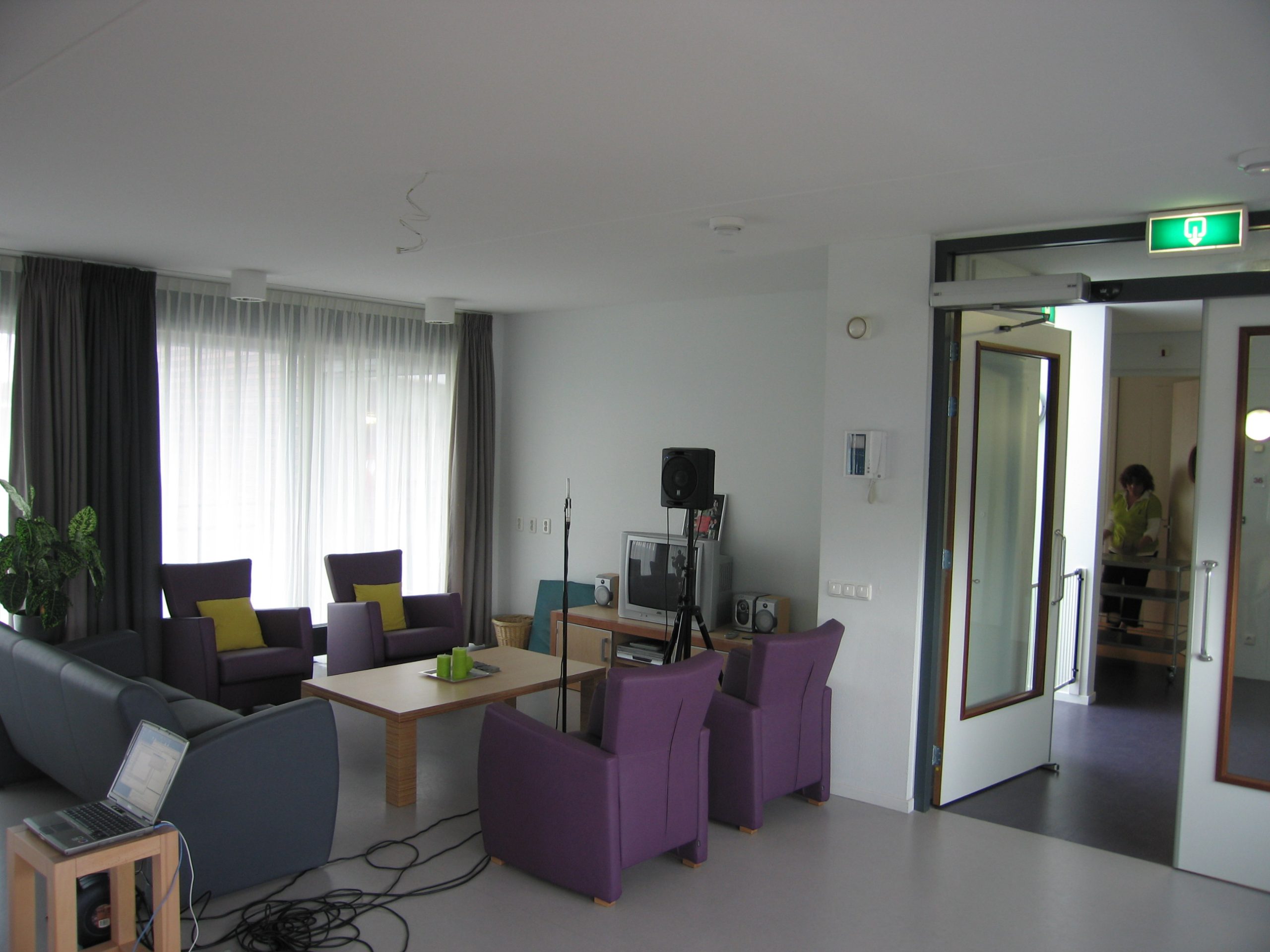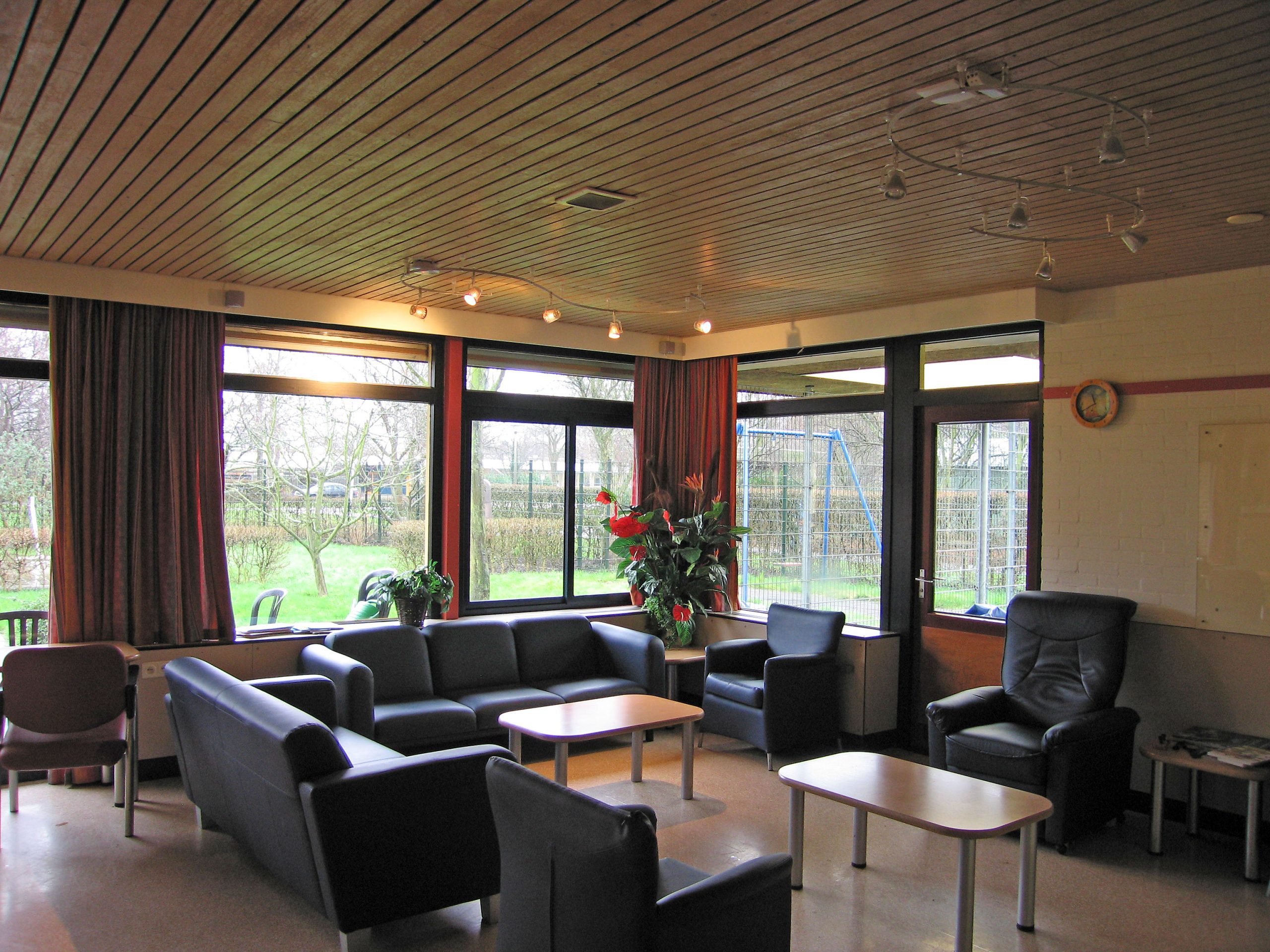Many people with intellectual disabilities spend their days in noisy institution living rooms. PhD researcher Konca Saher developed guidelines to improve room acoustics.
It’s a bit of a hidden tragedy. The clean impersonal institution living rooms are not the most inviting place to start with. And because of the linoleum floors and hard surfaces (hygiene rules), such rooms are invariably noisy. To add insult to injury, hearing impairment in the group with intellectual disabilities (ID) is twice as common (30 percent) as in the average population. The effect is that speech in these quarters becomes difficult to understand, especially for the patients. As a result, they may give up communicating altogether and retreat from social interaction, which ironically is the exact opposite of what the living rooms were supposed to bring about.
Dr. Konca Saher, who specialised in room acoustics, blames the bad acoustics on ignorance. ‘Architects, acousticians and care institution administrators do not have enough information to choose the correct values of appropriate parameters’, she writes in the PhD thesis. Such ignorance often results in deteriorating sound conditions when (sound absorbing) ceilings are repainted and absorption mostly vanishes.
The basics of sound science or acoustics are simple enough. In a room with hard surfaces, sound waves reflect in every which way without much of attenuation. Reverberation times (the time it takes a blip of sound to extinguish) up to a second typically occur. Speech intelligibility suffers from this because the sound gets mixed up. Even more so when other people are talking in the background or a radio or TV-set plays popular songs.
If endless reflections are the problem, sound absorption must be the remedy. Walls, ceilings, floor and furniture all reflect and absorb sound. But here it gets tricky, since what is the overall effect of a room?
One option, in an existing room, is to measure sound levels and reverberation times at various places. These values may be matched to an average absorption coefficient (alfa mean or alfa) for the room.
Another option is to calculate the room acoustics with ray-tracing programmes. This computer simulation will produce reverberation times, which can be displayed by colour codes on a map of the room. The outcome can also be made audible. Producing these computerised room acoustics is known as an auralisation. It provides a way to let people experience the acoustics of a room before it’s been built.
The mean absorption coefficient (alfa) appears to be the determining variable in room sound quality. Saher correlated alfa values with subjective room ratings by test persons. These varied from unacceptable (alfa less than 0.10 to good (0.28) or very good (0.40).
Saher argues that because of the prevalence of hearing disabilities in the target group, classifications by them will be one step lower. In other words, rooms should have a very good rating for the patients to experience the sound environment as good.
But how does one achieve that? Saher, who also had the lead over the acoustical qualities for the London 2012 Olympic temporary venues, developed a design tool for architects called Room Quality Prediction Sheet. It’s basically a computer programme which tells architects how much absorption material they need for the desired acoustics of room.
An architect chooses the desired room quality rating and enters the surfaces of walls, floor and ceiling. The Prediction Sheet then calculates the required surface of Class-A absorption material, which is typically larger than the ceiling surface (using less quality absorption material leads to even larger surface requirements). This means that installing a sound-absorbing ceiling is a necessity, but no ideal solution yet. Additional absorbing materials could be placed on the floor (often not possible or allowed in institutions), on the wall or in the form of free-hanging muffler panels. The good news is that there is a large choice of materials to pick from, all with their own (dis)advantages. Saher conveniently lists most of these in her thesis.
One can only hope that care institutions will take notice of Saher’s work when they decide to renovate.


Konca Saher, ‘Acoustical Design Guidelines for Living Rooms for Adults with Intellectual Disabilities’, 5 June 2013, PhD supervisor Prof. Mick Eekhout (Architecture).



Comments are closed.